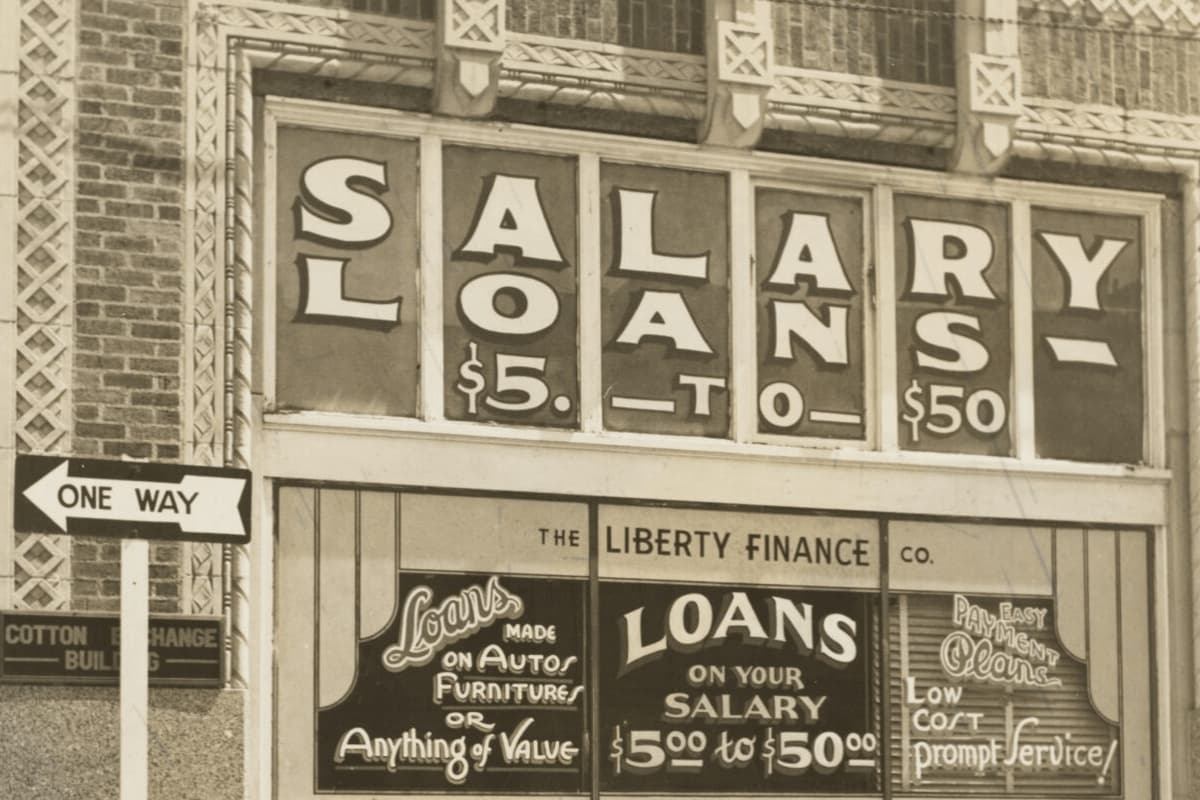How to choose a personal loan in Canada
By Émilie J.Talbot | Published on 26 Jul 2023

It can happen at any time…out of the blue you find yourself with an urgent need for money but you don’t have enough in your bank account. There are many reasons why you may need a personal loan, such as needing money for an unexpected expense, doing renovations, buying furniture, or fixing your car. You can also use a personal loan to consolidate debt. The first step in taking out a personal loan is to have a good reason. Then you have to know how to choose a personal loan so that you end up paying as little as possible in fees and interest.
Why do you want to get a personal loan?
When shopping for a loan, no matter which one, the most important thing is the interest rate. Personal loans are the most expensive type of loan, which is why it’s important to consider all the other financing options before applying for a personal loan. If you do end up applying for a personal loan, you should choose one that offers the lowest possible rates in order to minimize the interest charges you’ll have to pay. There are several ways you can go about this, depending on why you need to borrow money.
Getting a loan to consolidate debt
If you want to consolidate your debts so you can repay them more easily, there are several options available to you. In fact, taking out a personal loan can help you accomplish this goal. However, before considering this usually more expensive option, check your eligibility for a line of credit. With a line of credit, you could get a rate around 9%, or even less if you have tangible assets.
Personal loans from banks, however, charge interest rates of around 11%. You only have to apply once and you can use the available credit (depending on your contract) when you need it. You’ll also have greater payment flexibility, as you can pay the amount you want as long as it covers the minimum payment (usually 1% or $50). Obviously, you need to be disciplined, in order to ensure that you pay off the entire balance within a reasonable timeframe.
If you prefer to have a payment schedule so that you can pay off the balance within the timeframe you want, you can take out a personal loan from a bank. In this case, you can choose between a fixed rate, which will remain the same throughout your amortization, or a variable rate, which will vary according to the prime rate.
[Offer productType=”Loan” api_id=”645e2e321f252a2d29244f28″]Getting a loan for renovations
If you’re looking to get a loan to renovate or repair your home, a home equity line of credit might be the right solution. Equity is the value of your property minus the remaining mortgage, and you can use the equity in your property to borrow. If you put your property as collateral when applying for this type of line of credit, you may get a lower rate than a regular line of credit.
In the event that the equity in your property is not sufficient, you can turn to a personal line of credit or even a personal loan.
Getting a loan for unforeseen expenses
Did the brakes on your car just fail? Need to buy yourself a new fridge? It happens! Again, if possible, obtain a line of credit that will give you access when you need it, when you need it. All you have to do is pay for what you borrow and make the payments you want. That way if your mechanic’s bill is higher than expected, you’ll have access to additional funds. As a second resort, get a personal loan.
Getting a loan to pay for education
If you need a loan to go back to school or finance your education, you can benefit from a student line of credit. You’ll get the same benefits as with a regular line of credit, but at a lower rate (around 4%). What’s more, you’ll pay no interest as long as you are enrolled in full-time study. Once again, as a second resort, get a personal loan.
Getting a loan to buy a used vehicle
You can get an auto loan by putting your car as collateral when applying. You’ll then get a lower interest rate than that of a personal loan, around 7% compared to around 11%. If you like the flexibility of lines of credit, you can use this type of financing as an option as well.
Getting a loan to invest in the stock market
Did you know that you can borrow money in order to invest? You can apply for a line of credit secured by these investments to obtain a lower interest rate, or take out an investment loan. Needless to say, it’s very dangerous to take out any type of loan against an investment, since you could theoretically lose everything and still have to repay the loan. Consult a financial advisor before borrowing for this purpose. Obviously, it would be downright irresponsible to get a personal loan at 11% interest to invest in the stock market, knowing that the average return (adjusted for inflation) of the stock markets is 7%, and that there are risks associated with stock market investing, of course.
What do you do if your bank refuses to lend to you?
If your bank refuses to give you the loan you requested, there are other solutions. Before we go any further, it’s important to mention that if your bank has refused to loan to you and you haven’t gone bankrupt in the past, your financial situation may be precarious. Before you seek other alternatives, ask yourself if you really need this money, and are there other alternatives?
If you really need the money to pay for essentials or to rebuild your credit, you can borrow from private companies. These companies offer second-resort loans, generally at a higher rate than traditional banks. To compare personal loans offered by private lenders in Canada, feel free to use our personal loan comparison tool.
The rate will depend on the type of loan. Unsecured loans, typically those $15,000 or lower, may come with an interest rate of 35% or more. Most private lenders offer between 24 and 60 months to repay their loans. In case of non-payment, the lender can take you to court. Usually loans over $15,000 will be secured loans. That is, the lender will take an asset, such as a car, as a repayment guarantee. In the event of non-payment, the lender can seize this asset. Private lenders offer secured loans of up to around $50,000, and you usually have 72 to 120 months to pay them off.
In the event that you want a loan of less than $15,000, you can still ask your lender if they will take an asset as collateral in order to get a reduced interest rate.
How to choose between personal loan offers
The most important thing to consider when shopping for a personal loan is to pay as little as possible. The cost of the loan includes the amount to be repaid, interest and fees, all divided into equal payments. For the same amount, the total cost of the loan varies greatly depending on the term of the loan and the interest rate. In order to pay as little as possible, always look for the shortest term and lowest interest, while making sure that the payment amount is within your budget. If you don’t have a budget, there are plenty of budgeting apps that can help you take control of your finances.
To better visualize the impact of a loan’s term, let’s consider a $10,000 loan with a 20% interest rate:
| Term (in months) | Monthly Payment | Total Repayment Amount |
| 12 | $922.59 | $11,071.08 |
| 36 | $367.64 | $13,235.04 |
| 60 | $260.59 | $15,635.40 |
| 84 | $217.36 | $18,258.24 |
| 120 | $188.07 | $22,568.40 |
As you can see, the length of the loan has a huge impact on its total cost. So always opt for the shortest possible duration when you take out a personal loan.
Now, suppose you get a loan of $10,000 over 60 months. Here is the impact of the interest rate on the cost of this loan:
| Interest Rate | Monthly Payment | Total Repayment Amount |
| 8% | $212.14 | $12,728.40 |
| 12% | $220.98 | $13,258.80 |
| 20% | $260.59 | $15,635.40 |
| 35% | $340.26 | $20,415.60 |
Not surprisingly, the interest rate has a big impact on the total cost of your loan. So always look for the lowest rate with the shortest duration.
Will you be able to repay the loan if you’re no longer able to work?
If you get sick and can no longer work, you’ll still have to pay off your loans. If you know that you won’t be able to repay it without having your job, you might want to take out loan insurance. This insurance is optional and you can get it from your lender or other insurance company. The cost will vary depending on your age, gender, health history and loan amount.
In conclusion, before resorting to a personal loan, make sure that you absolutely need this money, because this type of loan ends up being expensive. If you absolutely need the cash, compare different lenders’ offers and choose the one that has the lowest rate using a loan comparison tool. Then go for the shortest possible term depending on how much you are able to repay each month. The consequences of non-payment are serious…your personal belongings can be seized, your credit score damaged, you could incur additional fees or even be taken to court.
